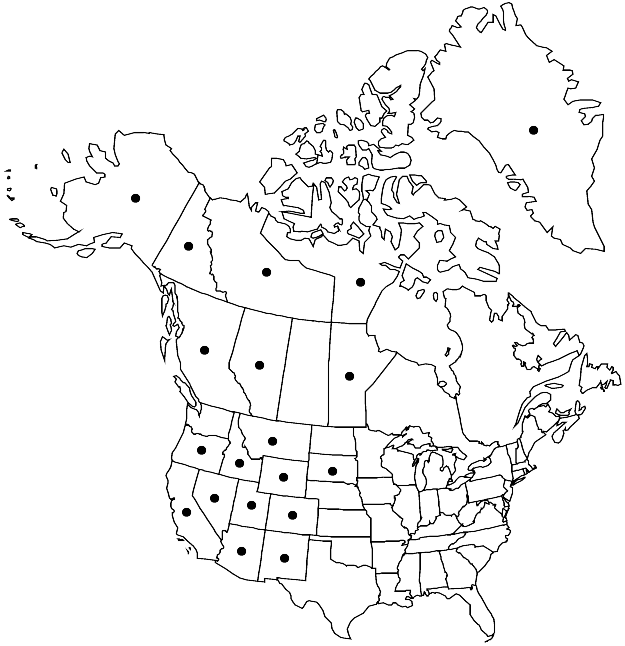Orthotrichum pellucidum
Öfvers. Kongl. Vetensk.-Akad. Förh. 23: 549. 1867.
Plants to 2.5 cm, appearing glaucous. Stem leaves stiff, closely erect-appressed, incurved when dry, oblong-lanceolate or lanceolate, 2–2.7 mm; margins recurved proximally, reflexed distally, entire; apex blunt or obtuse; basal laminal cells short-rectangular to quadrate, grading to subquadrate at margin, walls thin, not nodose; distal cells 6–11 µm, 1-stratose, papillae 1–3 per cell, conic or 2-fid, large. Specialized asexual reproduction absent. Sexual condition gonioautoicous. Seta 1–1.5 mm. Capsule 1/2 emergent to short-exserted, oblong-ovate to ovate when mature, oblong to short-oblong when old and dry, 1.2–1.9 mm, strongly 8-ribbed entire length, rarely 16-ribbed with 8 short intermediate ribs, constricted below mouth when dry; stomata immersed; peristome single; prostome rudimentary; exostome teeth usually 16 when mature, irregularly split, often absent when capsule is old, erect or spreading, papillose-striate to coarsely reticulate-papillose; endostome segments absent. Calyptra oblong, smooth, hairy, hairs papillose. Spores 10–15 µm.
Habitat: Calcareous or siliceous boulders, cliff faces in xeric areas, direct sunlight
Elevation: moderate to high elevations (500- 3000 m)
Distribution

Greenland, Alta., B.C., Man., N.W.T., Nunavut, Yukon, Alaska, Ariz., Calif., Colo., Idaho, Mont., Nev., N.Mex., Oreg., S.Dak., Utah, Wyo., n Europe.
Discussion
Orthotrichum pellucidum is distinguished by its blunt, lanceolate-oblong leaves that always appear glaucous because of the large 2-fid papillae of the distal laminal cells. When the plants are fertile, which is usually the case, the short-exserted, oblong-ovate, 8-ribbed capsules identify O. pellucidum. The capsule has stomata in the proximal to mid capsule, more or less covered by projecting subsidiary cells.
Selected References
None.